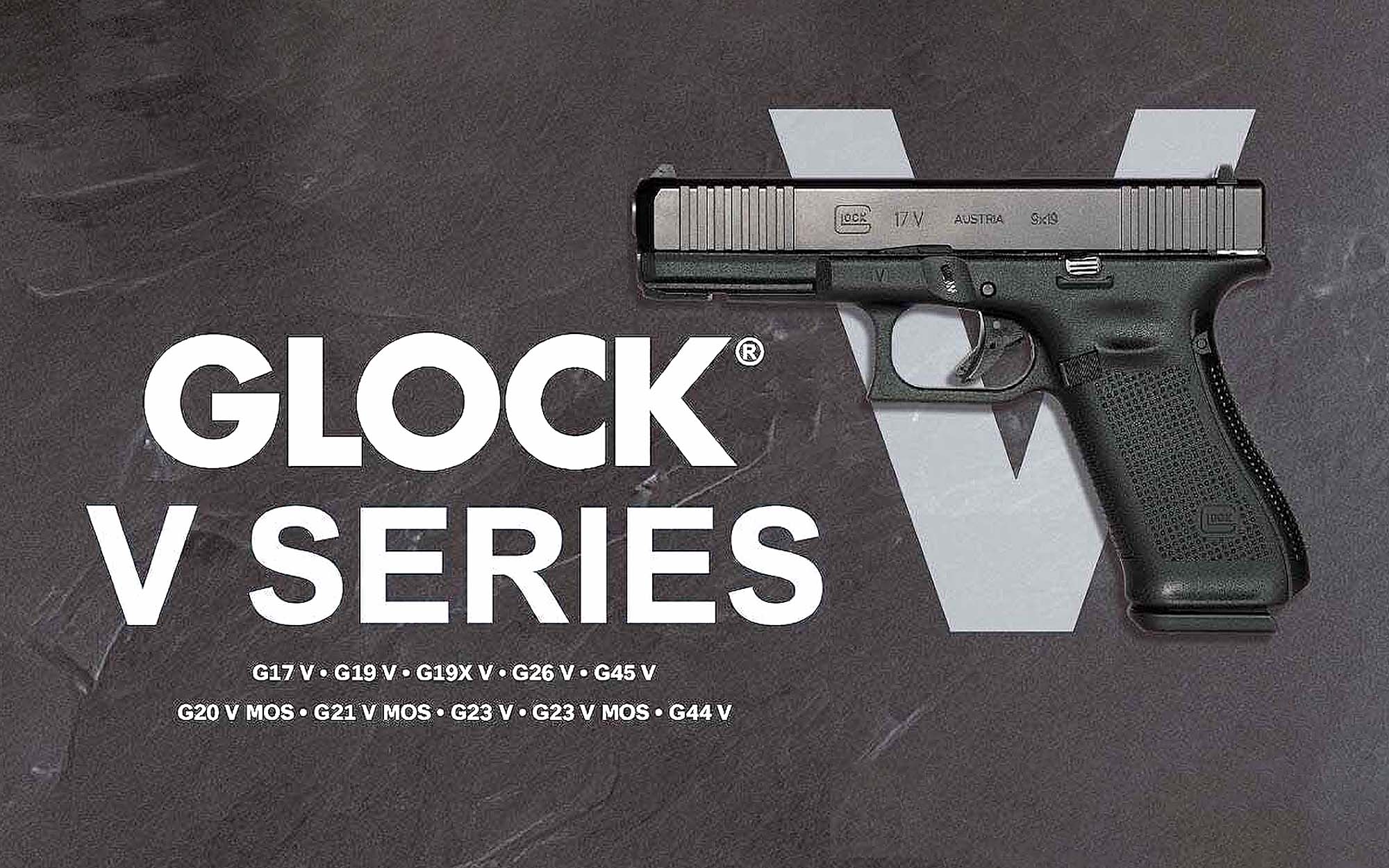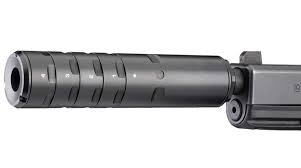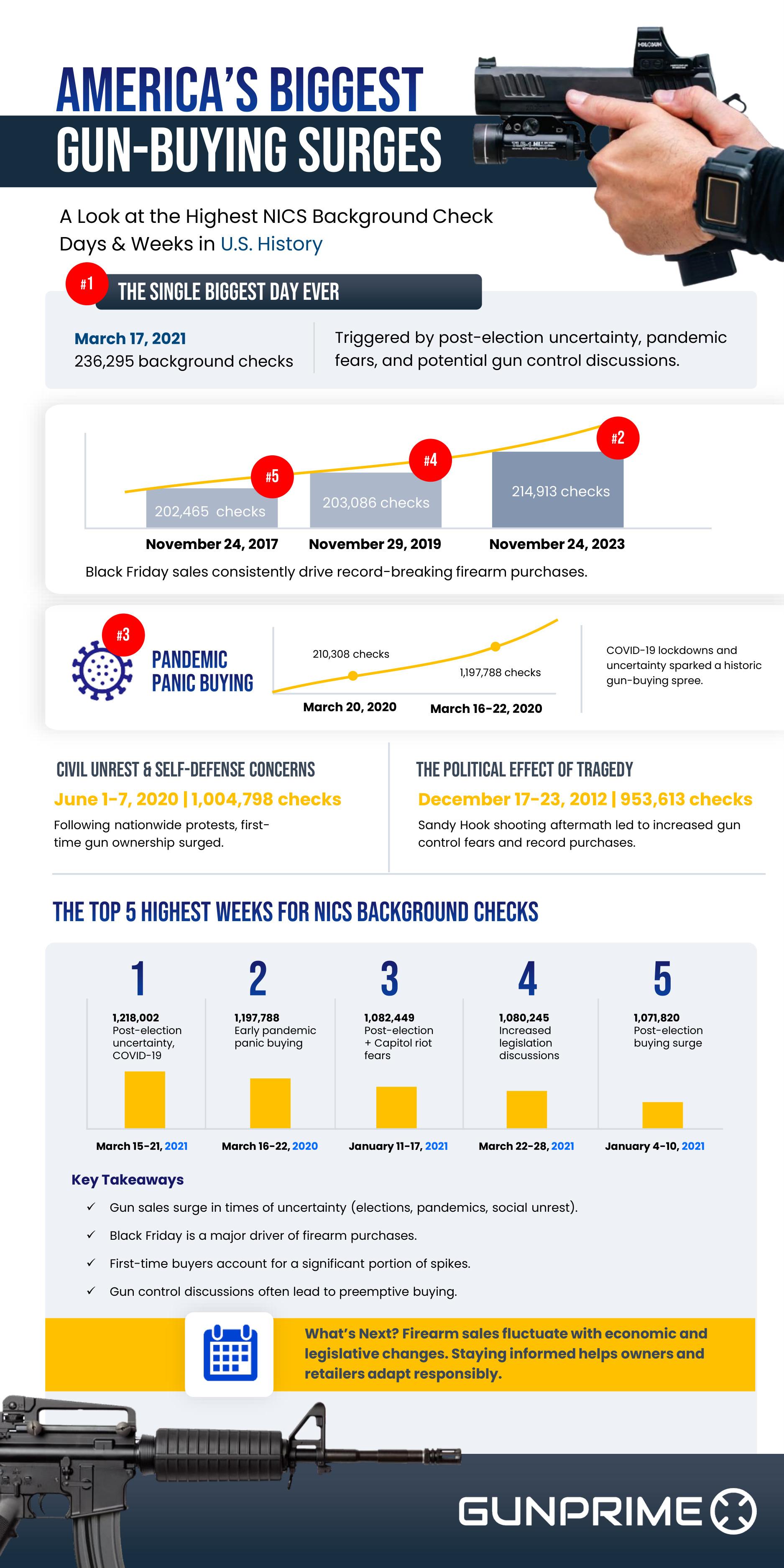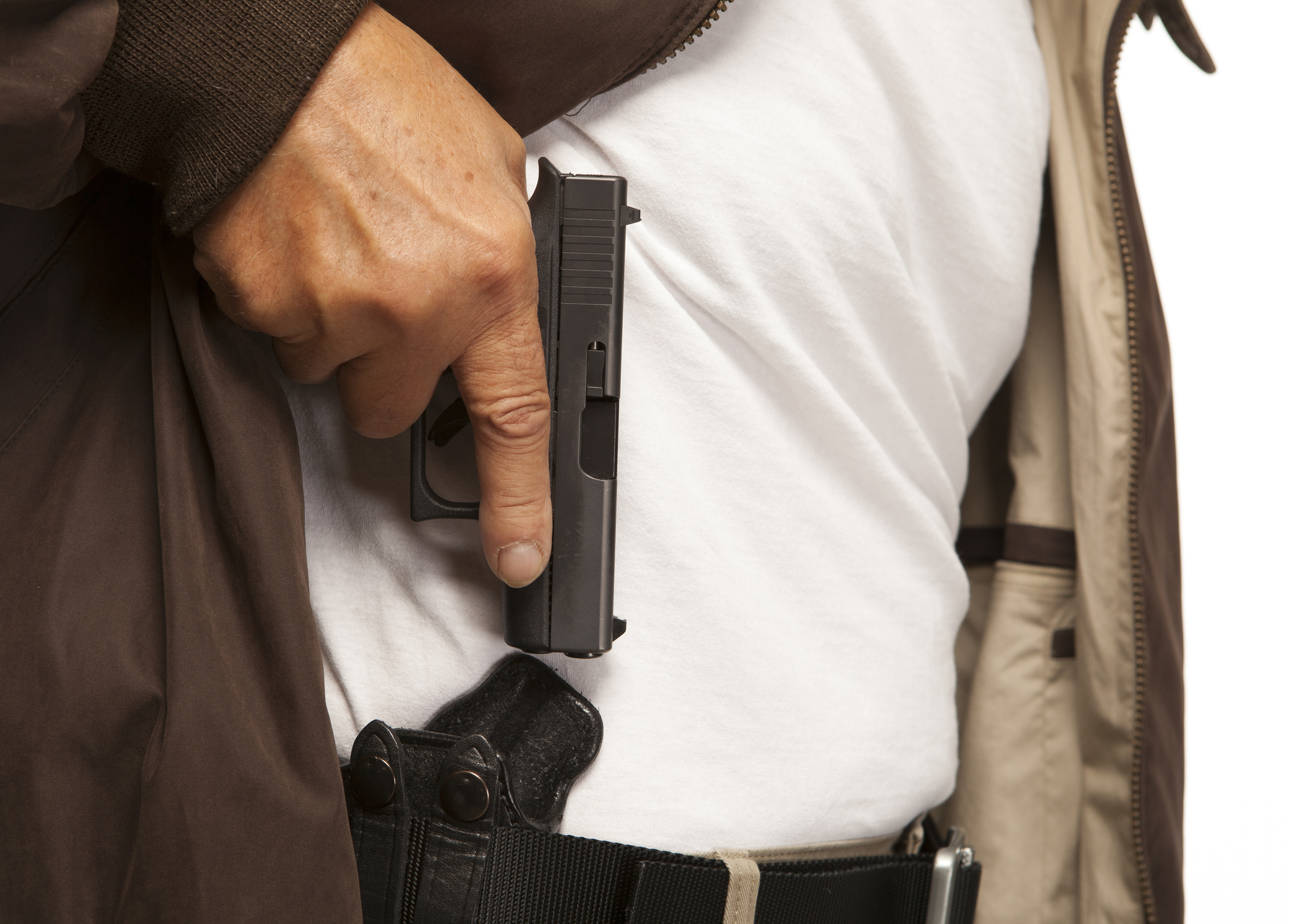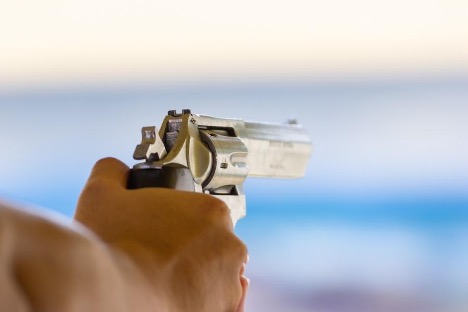An article by GunPrime LLC
Understanding, Maintaining, and Using a Hunting Rifle
Hunting is a cherished tradition for many outdoor enthusiasts. Whether you hunt for sport, sustenance, or conservation, having a reliable and well-maintained hunting rifle is essential. Understanding, maintaining, and using a hunting rifle are crucial skills that every responsible hunter should possess.
In this comprehensive blog post, we will delve into the basics of hunting rifles, exploring the different types and features that are available. We will also discuss the importance of regular cleaning and provide you with a step-by-step guide on how to properly clean your hunting rifle.
But maintenance goes beyond just cleaning. We will also cover the necessary steps to maintain your hunting rifle, including routine inspections for any damage, appropriate lubrication, safe storage practices, and proper handling and usage techniques.
Accuracy is paramount when it comes to hunting, and we will provide you with tips and techniques to improve your shooting accuracy with your hunting rifle. From understanding rifle sights to the role of rifle caliber in accuracy, you will learn the key factors that contribute to hitting your target consistently.
Of course, safety is of utmost importance when handling firearms. We will discuss basic gun safety rules, proper loading and unloading procedures, as well as how to handle misfires and hangfires safely.
Whether you are a seasoned hunter looking to brush up on your skills or a novice just starting out, this blog post will serve as a valuable resource for understanding, maintaining, and using a hunting rifle. By following the tips and guidelines provided, you can ensure a safe and successful hunting experience. So, let's dive in and equip ourselves with the knowledge and skills necessary to make the most of our hunting rifles.
An Ultimate Guide to Hunting Rifles
Basics of Hunting Rifles: Types and Features
Hunting rifles come in various types and are equipped with different features to suit the specific needs of hunters. Understanding the basics of hunting rifles will help you make informed decisions when choosing the right firearm for your hunting adventures. In this section, we will explore the different types of hunting rifles and discuss their key features.
Bolt-Action Rifles
Bolt-action rifles are a popular choice among hunters due to their reliability, accuracy, and versatility. These rifles feature a manually operated bolt mechanism, where the shooter manually pulls back and pushes forward the bolt to load and eject cartridges. Bolt-action rifles are known for their exceptional accuracy and are available in various calibers, making them suitable for different game species.
Semi-Automatic Rifles
Semi-automatic rifles, also known as self-loading rifles, are designed to automatically load a new cartridge into the chamber after each shot. These rifles are favored by hunters who require quick follow-up shots, such as when hunting small game or engaging in pest control. Semi-automatic rifles provide rapid-fire capabilities and are available in a range of calibers.
Lever-Action Rifles
Lever-action rifles have a distinctive lever mechanism located around the trigger guard, which is used to load and eject cartridges. These rifles have a classic and nostalgic appeal and are commonly associated with western-style hunting. Lever-action rifles are reliable and fast to operate, making them suitable for hunting medium-sized game at short to moderate ranges.
Marlin Model 1895 SBL 45-70 Stainless
Pump-Action Rifles
Pump-action rifles, also known as slide-action rifles, feature a pump mechanism located
beneath the barrel. The shooter manually slides the pump forward and backward to load and eject cartridges. While less common than other types, pump-action rifles are known for their reliability and are often used for hunting in brushy or dense environments.
Single-Shot Rifles
Single-shot rifles, as the name suggests, can only hold and fire a single cartridge at a time. These rifles have a simple design and are often used for hunting purposes that require precise and accurate shots, such as varmint hunting or hunting in areas where ammunition conservation is critical. Single-shot rifles are lightweight and easy to handle.
CVA Scout V2 45-70 25" Stainless
Key Features to Consider
When selecting a hunting rifle, there are several key features to consider:
- Caliber: The caliber of the rifle determines the size and power of the ammunition it uses. Consider the game you will be hunting and select a caliber appropriate for your needs.
- Barrel Length: Barrel length affects the rifle's overall length and weight, as well as the velocity and accuracy of the bullet. Longer barrels generally provide higher bullet velocities and better accuracy.
- Stock Material and Design: The stock of the rifle should be comfortable and ergonomic, allowing for a secure grip and proper shooting posture. Common stock materials include wood, synthetic materials, and laminates.
- Action Type: The action type refers to the mechanism by which the rifle loads, fires, and ejects cartridges. Choose an action type that suits your shooting style and preferences.
- Optics Compatibility: Consider whether the rifle is compatible with optics, such as scopes or red dot sights, if you plan to use them for improved accuracy and target acquisition.
Understanding the different types and features of hunting rifles will help you choose the most suitable firearm for your hunting needs. Take the time to research and handle various rifles to find the one that feels comfortable and suits your preferences. Remember, selecting the right hunting rifle is an important step towards a successful and enjoyable hunting experience.
Enjoy this article?Leave a review below
How to Clean Your Hunting Rifle
Properly cleaning your hunting rifle is essential for maintaining its performance and longevity. Regular cleaning helps remove dirt, debris, and residue that can accumulate over time and affect the rifle's accuracy and functionality. In this section, we will discuss the importance of regular cleaning, the materials needed for cleaning, and provide you with a step-by-step process to effectively clean your hunting rifle.
The Importance of Regular Cleaning
Regular cleaning is crucial for several reasons:
- Preventing Corrosion: Firearms are exposed to moisture, which can lead to rust and corrosion. Regular cleaning helps remove moisture and prevent the formation of rust, preserving the integrity of your rifle.
- Removing Fouling and Residue: When you shoot a rifle, fouling and residue from the ammunition can build up in the barrel and other parts of the firearm. This buildup can affect accuracy and cause malfunctions if not cleaned regularly.
- Maintaining Accuracy: A clean barrel ensures consistent bullet trajectory and accuracy. Removing fouling and residue helps maintain the rifle's accuracy, which is crucial for successful hunting.
- Extending Lifespan: Proper cleaning and maintenance prolong the lifespan of your hunting rifle. By preventing rust and addressing potential issues early on, you can enjoy your firearm for years to come.
Materials Needed for Cleaning
Before you begin cleaning your hunting rifle, gather the following materials:
- Cleaning Rod: A long, sturdy cleaning rod that matches the caliber of your rifle. Ideally, choose a rod made of materials like carbon fiber or stainless steel to prevent damaging the barrel.
- Bore Brush: A bore brush specifically designed for your rifle's caliber. Bore brushes have bristles that help remove fouling from the barrel.
- Cleaning Patches: Small, square pieces of cloth or patches made of cotton or synthetic material. These patches are used to apply cleaning solvents and remove debris.
- Cleaning Solvent: Use a gun-specific cleaning solvent that effectively removes fouling and residue. Different solvents are available for specific purposes, such as copper fouling or carbon buildup.
- Lubricant: A high-quality gun lubricant or oil to lubricate moving parts and protect against corrosion.
- Cleaning Jags and Slotted Tips: These attachments are used to hold the cleaning patches securely on the cleaning rod.
Here are some other items that will help in the cleaning process
Bore Snake (Optional): A bore snake is a compact and portable cleaning tool that combines a brush and cleaning patches. It can be used for quick cleaning in the field.
Cleaning Mat: A dedicated mat or surface to protect your work area from solvent spills and to provide a clean and organized space for disassembling and cleaning your rifle.
Toothbrush or Nylon Brush: A soft-bristled toothbrush or nylon brush can be used to clean hard-to-reach areas and crevices.
Microfiber Cloth: Use a microfiber cloth to wipe down and polish the exterior of your rifle.
Step-by-Step Cleaning Process
Follow these steps to clean your hunting rifle effectively:
- Ensure Safety: Before beginning any cleaning process, ensure that the rifle is unloaded and the chamber is empty. Remove the magazine if applicable and visually inspect the chamber to verify it is clear.
- Disassemble if Necessary: Some rifles may require partial or complete disassembly for thorough cleaning. Refer to your rifle's user manual for specific instructions on disassembly.
- Cleaning the Barrel:
- Attach the appropriate bore brush to the cleaning rod, and apply a few drops of cleaning solvent to the brush.
- Insert the cleaning rod into the chamber end of the barrel and push it through until the brush exits the muzzle.
- Move the brush back and forth through the barrel using gentle, but firm, strokes. Repeat this several times to loosen and remove fouling.
- Remove the bore brush and attach a cleaning patch to the jag or slotted tip. Apply a few drops of cleaning solvent to the patch.
- Insert the cleaning rod with the patch into the chamber end of the barrel and push it through until the patch exits the muzzle.
- Repeat this process with clean patches until they come out relatively clean, indicating the barrel is free of fouling.
- Use a dry patch to remove any remaining solvent from the barrel.
- Cleaning the Action and Receiver:
- Use a toothbrush or nylon brush to clean the action, receiver, and other hard-to-reach areas. Pay attention to areas where fouling and debris may accumulate.
- Wipe down these areas with a clean, dry cloth to remove any residue or excess solvent.
- Lubrication:
- Apply a small amount of lubricant or oil to the moving parts of the action, such as the bolt and slide.
- Use a clean cloth to spread the lubricant evenly, ensuring all necessary parts are adequately coated.
- Avoid over-lubrication, as excess oil can attract dust and debris.
- Exterior Cleaning:
- Use a microfiber cloth to wipe down and polish the exterior surfaces of your rifle. Pay attention to areas with fingerprints, dirt, or smudges.
- For wooden stocks, consider using a specific wood cleaner or conditioner to maintain their appearance and protect them from moisture.
- Reassembly:
- If you disassembled any parts, carefully reassemble your rifle according to the manufacturer's instructions.
- Perform a safety check to ensure proper reassembly and functionality.
By following these steps and regularly cleaning your hunting rifle, you can maintain its performance and reliability. Remember to always prioritize safety when handling firearms and to store your rifle securely when not in use. A clean and well-maintained hunting rifle will serve as a trusty companion during your hunting adventures.
How to Maintain Your Hunting Rifle
Proper maintenance is crucial for keeping your hunting rifle in optimal condition. Regular maintenance ensures that your firearm functions reliably, performs accurately, and remains safe to use. In this section, we will discuss the necessary steps to maintain your hunting rifle effectively.
Routine Inspection for Any Damage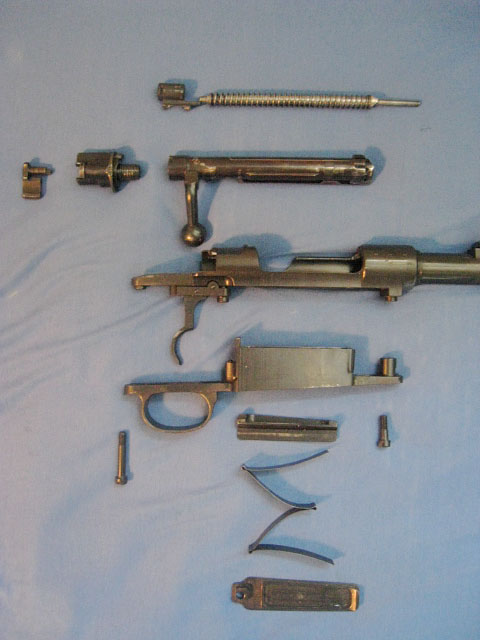
Regularly inspecting your hunting rifle is essential for identifying any potential issues or damage. Here are some key areas to inspect:
- Barrel: Check the barrel for signs of corrosion, pitting, or damage. Use a bore light to examine the bore for any obstructions or irregularities.
- Stock: Inspect the stock for cracks, splits, or other damage. Pay attention to the areas around the action and the barrel channel.
- Action and Trigger Mechanism: Ensure the action operates smoothly and the trigger functions properly. Look for any signs of wear, broken parts, or misalignment.
- Scope and Optics (if applicable): Inspect your scope or any other optics for any damage, loose screws, or fogging. Verify that the reticle is properly aligned.
- Mounts and Rings (if applicable): Check the mounts and rings for any loosening or shifting. Ensure they are securely attached to the rifle and properly aligned with the bore.
- Magazine and Feeding Mechanism: Examine the magazine for any damage or deformities. Test the feeding mechanism to ensure cartridges feed smoothly and reliably.
Appropriate Lubrication
Lubrication is crucial for maintaining the smooth operation of your hunting rifle. Here are some key points to consider:
- Use the Right Lubricant: Select a high-quality lubricant specifically designed for firearms. Consider using different types of lubricants for specific parts, such as oil for moving parts and grease for friction points.
- Apply Lubricant Sparingly: Avoid over-lubricating, as excess oil or grease can attract dust, dirt, and debris. Apply lubricant sparingly to the necessary moving parts, such as the bolt, slide, and hinges.
- Wipe Off Excess Lubricant: After applying lubricant, use a clean cloth to wipe off any excess. This helps prevent the accumulation of dirt and residue.
- Follow Manufacturer's Recommendations: Consult your rifle's user manual or the lubricant manufacturer's instructions for specific guidance on lubrication points and frequency.
Safe Storage Practices
Proper storage helps protect your hunting rifle from damage and ensures its longevity. Consider the following storage practices:
- Secure Storage Location: Store your rifle in a secure location, such as a gun safe or lockable cabinet, to prevent unauthorized access and theft.
- Temperature and Humidity Control: Avoid extreme temperature and humidity conditions, as they can lead to rust and corrosion. Consider using dehumidifiers or moisture-absorbing products in your storage area.
- Barrel Protection: Use protective barrel covers or silicone-treated gun socks to prevent moisture and dust from accumulating in the barrel.
- Remove Ammunition: When storing your rifle for an extended period, remove the ammunition from the magazine and chamber. Store ammunition separately in a cool and dry location.
- Regular Inspection: Periodically inspect your stored rifle for any signs of rust, corrosion, or other damage. Wipe down the exterior surfaces with a clean cloth to remove any dust or moisture.
Enjoy this article?Leave a review below
Proper Handling & Usage
Proper handling and usage of your hunting rifle are essential for its longevity and safety. Consider the following guidelines:
- Follow Safety Rules: Always adhere to basic gun safety rules, such as treating every firearm as if it is loaded, keeping the muzzle pointed in a safe direction, and keeping your finger off the trigger until ready to shoot.
- Use Proper Ammunition: Ensure you use the correct caliber and type of ammunition recommended by the rifle manufacturer. Using improper ammunition can cause severe damage to your rifle and compromise safety.
- Avoid Excessive Recoil: Excessive recoil can cause damage to the rifle, especially the stock and scope. Use proper shooting techniques, and consider using recoil-reducing devices or shoulder pads if necessary.
- Avoid Excessive Dry Firing: Dry firing, or firing the rifle without ammunition, can cause stress on the firing pin and other internal components. If dry firing is necessary for practice or training, consider using snap caps or dummy rounds.
- Seek Professional Assistance: If you encounter any issues or concerns with your rifle, seek assistance from a qualified gunsmith or firearms expert. They can provide guidance, perform necessary repairs, or offer advice on maintenance and upgrades.
By following these maintenance practices and guidelines, you can ensure that your hunting rifle remains in top condition, performs reliably, and remains safe to use. Regular inspection, appropriate lubrication, safe storage, and proper handling are key factors in maintaining the longevity and performance of your firearm.
Buy Hunting Rifles Here
How to Improve Accuracy with Your Hunting Rifle
Improving accuracy with your hunting rifle is crucial for making precise and ethical shots while out in the field. Whether you are a seasoned hunter looking to enhance your shooting skills or a beginner seeking guidance, this section will provide you with valuable tips and techniques to improve your accuracy.
Understanding Rifle Sights
Properly understanding and utilizing your rifle sights is fundamental for achieving accurate shots. Consider the following points:
- Iron Sights: Iron sights are the traditional sights found on most rifles. They typically consist of a front sight post and a rear sight notch or aperture. Practice aligning the front and rear sights to ensure proper sight picture and sight alignment.
- Optics: If you use a scope or other optical sighting device, ensure it is properly mounted, aligned, and zeroed. Understand the reticle and make necessary adjustments for windage and elevation based on the distance and conditions you are shooting in.
- Sight Picture: Consistently achieving the same sight picture is crucial for accuracy. Focus on aligning the front and rear sights, ensuring they are centered and level, and maintaining a clear and steady sight picture on the target.
The Role of Rifle Caliber in Accuracy
The caliber of your rifle plays a significant role in its accuracy potential. Consider the following aspects:
- Bullet Selection: Choose the appropriate bullet weight and design for the game you are hunting. Different bullets perform differently, and selecting the right one for your intended target can improve accuracy and terminal performance.
- Barrel Twist Rate: The twist rate of the barrel affects the stability and accuracy of the bullet in flight. Different bullet weights may require different twist rates for optimal accuracy. Consult your rifle's specifications or a ballistics expert for guidance.
- Ammunition Quality: Use high-quality ammunition from reputable manufacturers. Consistency in bullet weight, powder charge, and overall cartridge quality can positively impact accuracy. Experiment with different brands and loads to find what works best for your rifle.
Proper Shooting Techniques
Employing proper shooting techniques is crucial for consistent accuracy. Practice the following techniques:
- Body Position: Maintain a stable and comfortable shooting position. Ensure your body is aligned with the target and the rifle is shouldered firmly but without excessive tension.
- Breath Control: Control your breathing and take the shot during a natural respiratory pause. Holding your breath momentarily reduces movement and improves shot placement.
- Trigger Control: Develop a smooth and controlled trigger pull. Apply gradual pressure to the trigger and avoid jerking or flinching, which can negatively impact accuracy.
- Follow-Through: Maintain focus on the target and continue to apply steady pressure to the trigger even after the shot breaks. This helps prevent any movement that can affect accuracy.
- Practice Dry Firing: Dry firing, or practicing your trigger pull without ammunition, can help improve trigger control, sight alignment, and overall shooting technique. Ensure the firearm is unloaded and follow all safety protocols when dry firing.
- Shooting from Various Positions: Practice shooting from different positions you may encounter while hunting, such as standing, kneeling, or prone. Familiarize yourself with how your rifle behaves in each position and work on maintaining accuracy.
Continued Training and Practice
Improving accuracy with your hunting rifle requires consistent training and practice. Consider the following:
- Regular Range Sessions: Dedicate regular time to visit the shooting range to practice your shooting skills. Focus on accuracy drills, target acquisition, and shooting from different distances.
- Shooting in Field Conditions: Whenever possible, practice shooting in conditions that simulate hunting scenarios, such as shooting from various angles, shooting with elevated heart rate, or dealing with environmental factors like wind and weather.
- Record Keeping: Keep a record of your shooting sessions, including distance, conditions, and accuracy results. This helps track your progress and identify areas for improvement.
- Seek Professional Training: Consider attending a shooting course or seeking guidance from a qualified instructor. They can provide personalized instruction, identify any flaws in your technique, and offer tips for improvement.
Remember, improving accuracy with your hunting rifle takes time and dedication. By understanding your rifle sights, considering the role of caliber, employing proper shooting techniques, and continuing to train and practice, you can enhance your accuracy and become a more effective and ethical hunter.
Safety Precautions When Using a Hunting Rifle
When using a hunting rifle, prioritizing safety is paramount. Adhering to proper safety precautions ensures the well-being of yourself and those around you. In this section, we will discuss essential safety rules, proper loading and unloading procedures, and how to handle misfires and hangfires safely.
Basic Gun Safety Rules
Before handling a hunting rifle, familiarize yourself with and practice the following basic gun safety rules:
- Treat Every Firearm as if it's Loaded: Always assume that a firearm is loaded, even if you believe it to be unloaded. Handle firearms with the same respect and caution regardless of their perceived status.
- Keep the Muzzle Pointed in a Safe Direction: Ensure that the muzzle of the rifle is always pointed in a safe direction, away from yourself and others. Never point the rifle at anything you do not intend to shoot.
- Keep Your Finger Off the Trigger: Keep your finger off the trigger and outside the trigger guard until you are ready to shoot. This prevents accidental discharges and ensures that you have proper control over the rifle.
- Know Your Target and What's Beyond: Be aware of your target and what lies beyond it. Ensure there is a safe backstop to stop the bullet and prevent any potential harm to others or unintended damage.
- Keep the Rifle Unloaded Until Ready to Use: Only load the rifle when you are in a safe shooting environment and ready to fire. Keep the rifle unloaded when not in use, and never leave a loaded firearm unattended.
- Observe Safe Zones of Fire: Be aware of your surroundings and know the safe zones in which you can safely shoot. Avoid shooting towards buildings, roads, or areas where people or livestock may be present.
- Avoid Alcohol and Drugs: Never handle a hunting rifle while under the influence of alcohol, drugs, or any substance that impairs your judgment or motor skills. Such impairment can lead to accidents and dangerous situations.
Proper Loading and Unloading
When handling a hunting rifle, it is crucial to follow proper loading and unloading procedures:
- Read the Rifle's Manual: Familiarize yourself with the specific loading and unloading procedures outlined in the rifle's user manual. Different rifles may have variations in their loading mechanisms.
- Ensure the Rifle is Pointed in a Safe Direction: Before loading or unloading the rifle, ensure that the muzzle is pointed in a safe direction, away from yourself and others.
- Use the Correct Ammunition: Confirm that you are using the correct caliber and type of ammunition recommended by the rifle manufacturer. Using incorrect ammunition can cause severe damage and pose a safety risk.
- Follow the Four-Step Process:
- Loading: With the rifle pointed in a safe direction, insert the magazine or load the chamber according to the rifle's specific instructions. Ensure the ammunition is fully seated and chambered properly.
- Chamber Check: After loading, visually and physically check the chamber to ensure it is loaded or unloaded as intended. Keep your finger off the trigger during this process.
- Unloading: To unload the rifle, follow the reverse process of loading, ensuring the rifle is still pointed in a safe direction. Remove the magazine or extract the chambered round, if applicable.
- Double-Check: After unloading, visually and physically check the chamber again to ensure it is empty. Keep the rifle pointed in a safe direction during this process.
Dealing with Misfires and Hangfires
In the event of a misfire or hangfire (delayed ignition), follow these steps to handle the situation safely:
- Misfire:
- Keep the rifle pointed in a safe direction and maintain strict muzzle discipline.
- Wait for at least 30 seconds, keeping the rifle pointed downrange and your face away from the ejection port.
- Carefully and slowly open the action, ensuring your face and body are clear of the ejection path.
- Remove the misfired cartridge and inspect it for any visible defects or signs of a firing pin strike.
- If the cartridge appears safe, follow proper disposal procedures. If it appears unsafe, consult a qualified gunsmith or dispose of it according to local regulations.
- Hangfire:
- Keep the rifle pointed in a safe direction and maintain strict muzzle discipline.
- Continue to aim at the target for an additional 30 seconds or longer, allowing sufficient time for the round to ignite.
- If the round does not ignite after the specified time, treat it as a misfire and follow the steps mentioned above.
Always prioritize safety when handling a hunting rifle. By adhering to basic gun safety rules, following proper loading and unloading procedures, and knowing how to handle misfires and hangfires safely, you can minimize the risk of accidents and ensure a safe shooting experience.
Enjoy this article? Leave a review below
Here are some Recommendations you may be interested in!
Ruger American Ranch FDE 7.62x39 16"
Ruger American Rifle 7MM-08 22"
Related articles: An Ultimate Guide to Hunting Rifles
Top Selling Rifle Optics For 2023
The Ultimate Buyer's Guide to Bullpup Rifles & Shotguns for [2023]


